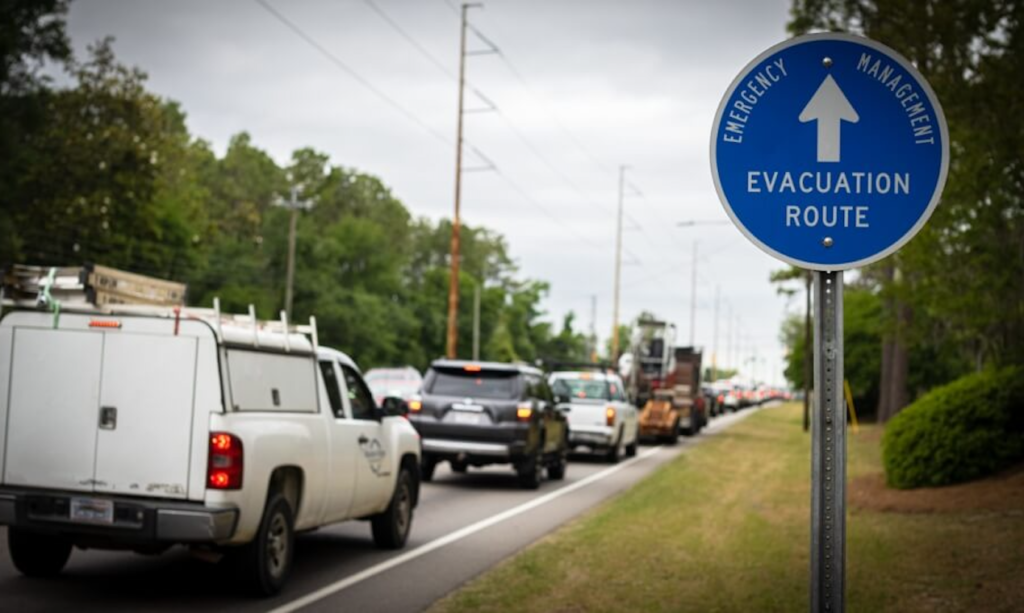These days, evacuation plans are essential for survival. SHTF scenarios can happen anytime, so you must be prepared. However, a method is only as good as its execution.
Every minute counts, so your efficiency can make or break your survival and how far you get. This article will outline how survivalists can have an effective evacuation plan and keep themselves safe.
1. Planning for Disaster
The first step in optimizing your evacuation is to decide what situations are most likely to happen to you, your family and your home. Your plan will significantly differ based on the type of disaster. For example, your evacuation for a fire in your home will likely be different than a Category 5 hurricane.
Diagram a plan for every disaster you can think of. A hurricane is only the tip of the iceberg. Depending on your area, you should also be vigilant of floods, earthquakes and chemical spills. Sometimes, the SHTF scenarios are human-induced, such as economic collapse, civil unrest in the streets or bomb threats. A targeted plan for each situation will lead to better results in your evacuation.
2. Finding a Safe Destination
No matter the scenario, you’ll need a destination for your evacuation. Decide on locations ahead of time so there’s no hesitation about where to travel once the time arrives. Whether it’s down the street or 200 miles away, you’ll benefit from immediately knowing where you’re going.
The disaster scenario could be happening to you, widespread across the area or nationwide. You won’t be the only one on the roads looking to escape. Use a map to find different routes to your destination and order them by efficiency and safety. The back roads may take longer, but the highways could jam when you need to evacuate. Use a GPS or telematics device to monitor your path and find the best route possible while driving.
3. Getting a Trailer
You may be on the road for a few days or weeks when evacuating. You’ll need enough room to haul supplies like food, medicine and other essentials. The best solution is to get a trailer. You can easily hitch one to your bugout vehicle and be ready at a moment’s notice.
The best type of trailer for you depends on how much you need to bring. You can get away with a utility trailer if it’s just you and a partner since they’re small, lightweight and affordable. Utility trailers are open-air, so you should consider putting rails on the side and a cover on top. More expansive options include car haulers and equipment trailers. They’re ideal if you have ATVs, motorcycles and other heavy equipment that won’t fit onto a utility trailer.
If you get a trailer, consider a few things in your selection. One of the most important is what material your trailer is. Steel trailers are your best bet if you want safety and durability — they’re affordable and easy to repair. Plus, they’re about 66% stronger than aluminum and able to absorb much stress in any condition. The treacherous weather in SHTF scenarios isn’t something you’d want to take a chance in.
4. Ensuring a Smooth Ride
When you’re evacuating, you won’t have much time, if any, to stop. Emergencies may happen with you or your family, but you’ll want to put as many things in your control as possible. Evacuating starts with prepping your vehicle for a smooth ride so you’re not stuck on the highway during a natural disaster.
Each month, perform preventive maintenance on your vehicle. These tasks include checking the oil, air filter and tire pressure. Also, inspect the transmission and brake fluids, spark plugs and engine belts every few months. Performing regular checkups allows you to diagnose problems early and save money on costly repairs. Some SHTF situations — like a hurricane — may give you a few days to prepare, so take advantage if you can.
Another way to make your vehicle prep more efficient is keeping an emergency gasoline supply on hand. In dire situations, gas stations may close, leaving many scrambling to find fuel sources. Keep extra gasoline stored and add fuel stabilizers to extend the shelf life. Typically, gasoline only lasts between three and six months, but stabilizers can extend that span to two years or more.
5. Assembling Evacuation Kits
Again, there won’t be much time to stop when evacuating. You can make the process smoother by giving yourself a head start in preparation. Make evacuation kits readily available so all you have to do is grab them and head out the door with your family. You can make an evacuation container for anything, but food and first aid are excellent places to start.
For food, it’s wise to stick to non-perishable items you can have for days and weeks without spoiling. Canned food — such as beans — will last at least a year if the can doesn’t swell or rust. Other nutritious foods that will last a long time include nuts, nut butter, dried fruit, jerky, granola and non-dairy milk. Keep these foods at room temperature or below if possible.
You should also have a first-aid kit available for use at any time. Any SHTF scenario poses a danger, whether from a human or a torrential storm. You should keep vital medications and emergency phone numbers in your first-aid kit. Plus, store items like bandages, antiseptic wipes, emergency blankets, gauze pads, tweezers and more. To increase efficiency, have one in your vehicle and your house.
Practice Makes Perfect
Time is of the essence when evacuating. Survival could come down to seconds, so you need to make your escape as efficient as possible. Practice your evacuation plan twice a year or as you see fit with your family and find the inefficiencies. Some SHTF situations won’t give you a heads-up, so it’s critical to be ready.
Author Bio: Oscar Collins is the editor-in-chief at Modded. Follow him on Twitter @TModded for frequent updates on his work!


